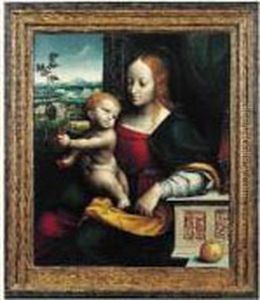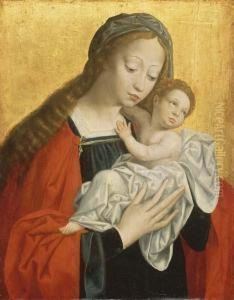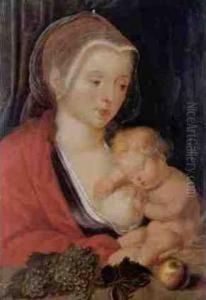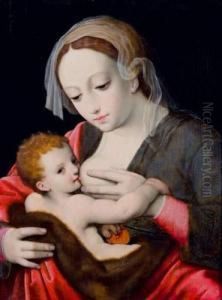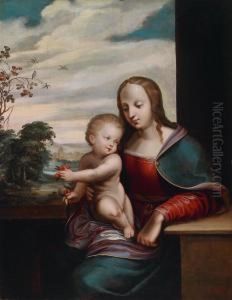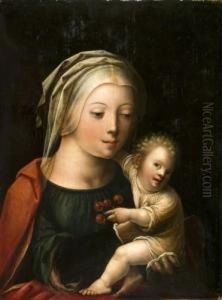Cornelis Sotte Cleef Van Cleve Paintings
Cornelis van Cleve, also known as Cornelis Sotte (the Fool) Cleef, was a Flemish painter born in Antwerp in 1526. He was the son of the famous Northern Renaissance artist Joos van Cleve, from whom he likely received his initial training. Unfortunately, there is not a great deal of documentation on Cornelis's life, and much of what is known about him has been pieced together from various archival materials and stylistic analysis of his surviving works.
Cornelis's artistic style was heavily influenced by his father, but he also developed his own distinctive approach. His works are characterized by a vivid use of color and a somewhat less refined handling of figures when compared to his father's precise technique. Cornelis was skilled in the portrayal of religious scenes, and his paintings often exhibit a narrative quality, with an emphasis on storytelling and expressive gestures.
Despite his talent, Cornelis's career was somewhat overshadowed by that of his father, and he did not achieve the same level of fame. Records indicate that he became a master in the Guild of St. Luke in Antwerp in 1546. During his career, he is thought to have produced altar pieces, devotional works, and portraits. However, his life and career were cut short when he died in 1569.
Cornelis van Cleve's works are not as well-known today, and only a relatively small number of paintings have been confidently attributed to him. His art provides insight into the transitional period between the late Gothic and Renaissance styles in Northern Europe, capturing a moment in the evolution of Flemish painting. His legacy is that of a capable artist who contributed to the rich tapestry of Flemish art in the 16th century, even if he did not reach the heights of prominence that his father did.
